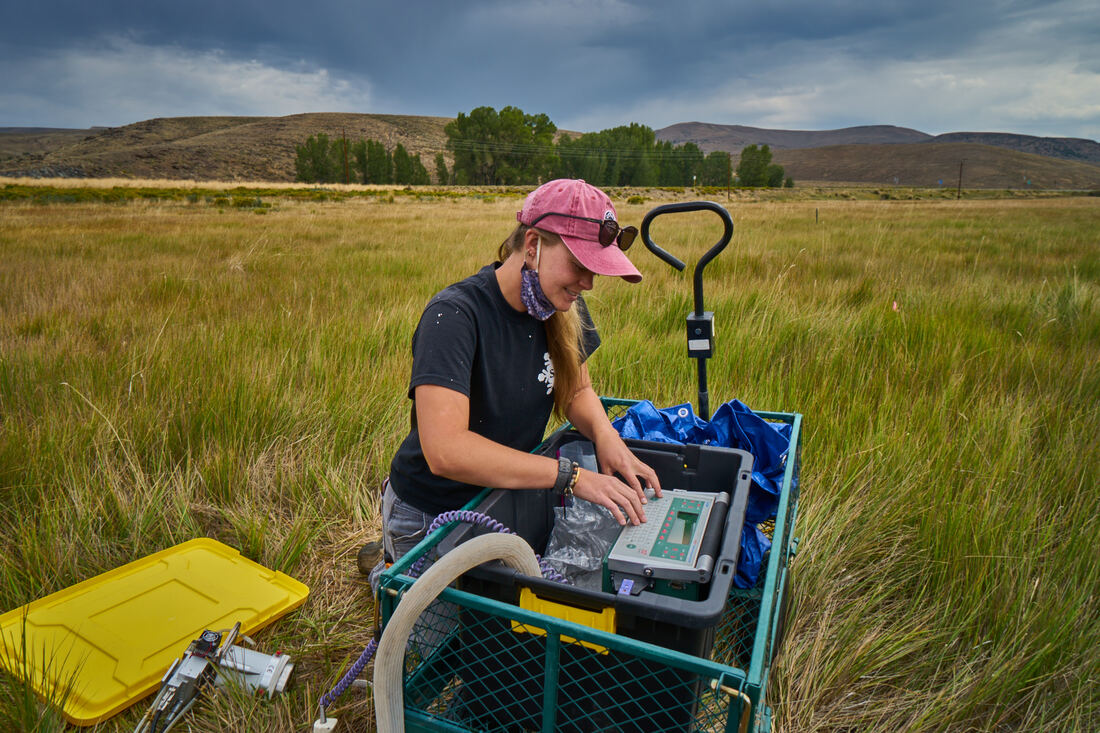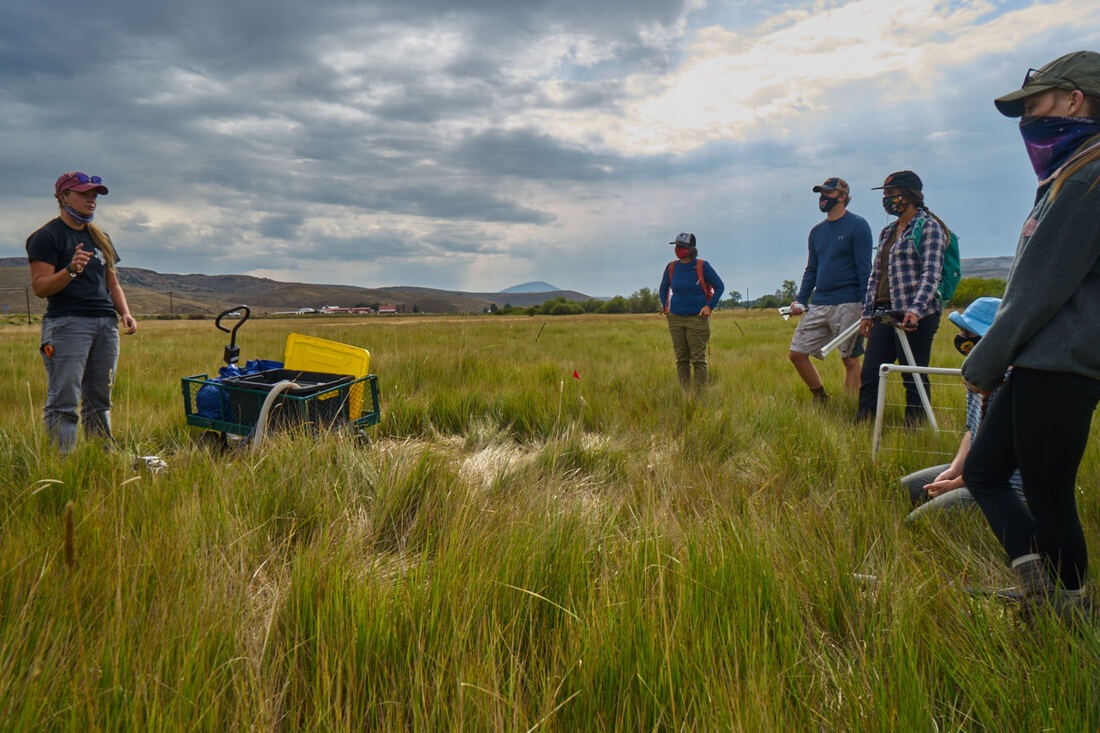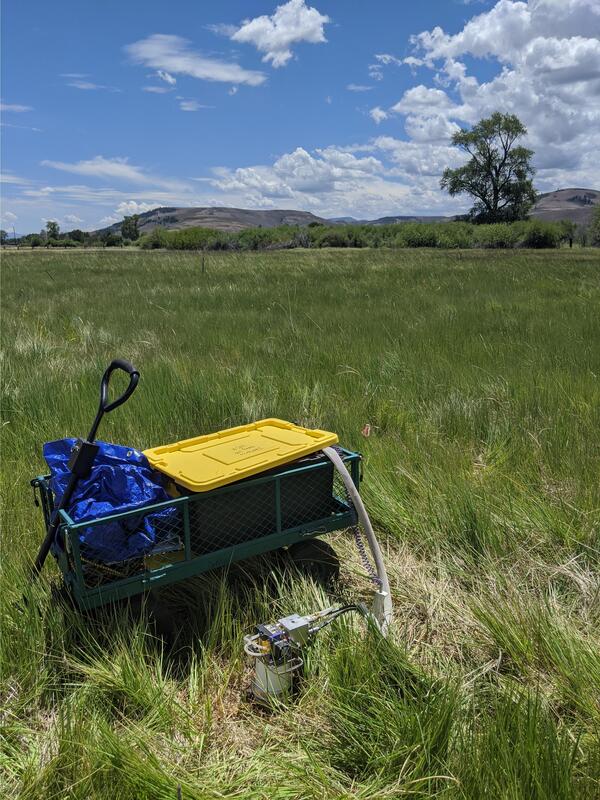|
For my thesis research, I am interested in the carbon sequestration potential of rangeland soils. Rangelands present a valuable opportunity to sequester carbon as they are continually managed grasslands with high productivity. At Coldharbour, and two other rangeland sites, compost was added to the soils for the purpose of increasing soil water holding capacity, plant productivity, and carbon sequestration. These compost additions were carried out in June of 2019 by Alexia Cooper, a Western MEM Alumni. My role in this project investigates the impact that compost additions have on soil respiration, that is, the release of CO2 by microbial organisms within the soil microclimate. Using the amount of respiration given off by these microbial organisms, and by testing the amount of soil organic carbon present, I will be able to calculate the mean residence time of carbon within the soil. The major goal of soil carbon sequestration is to increase the length of time that carbon resides within the soil profile. If I am able to find that compost additions indeed increase this residence time of carbon, then implementing compost additions may be an impactful strategy employed by ranchers to improve rangeland soil health while also supporting climate change mitigation. Pictured is a piece of equipment that measures the amount and rate of CO2 released from the soil. I am also collecting soil moisture and soil temperature weekly and will be identifying the soil microbial communities within each plot in the summer and winter seasons to further understand the shifts that occur on an annual basis. I hope with the collaboration of Coldharbour Institute and Western Colorado University that my research results may go on to support impactful management strategies in rangeland soil health for the benefit of Gunnison ranchers, community members and overall environmental health. Written by Alexandra VanTill, Student in the Master of Science in Ecology and Conservation program at Western Colorado University
0 Comments
Leave a Reply. |
Ongoing ResearchNotes from the field of Coldharbour Ranch. Archives
October 2021
Categories
All
|
Sign up for our newsletter below.
|
|
Coldharbour Institute is a 501(c)3 Non-Profit Organization
P.O. Box 463 Gunnison CO 81230 |



 RSS Feed
RSS Feed
